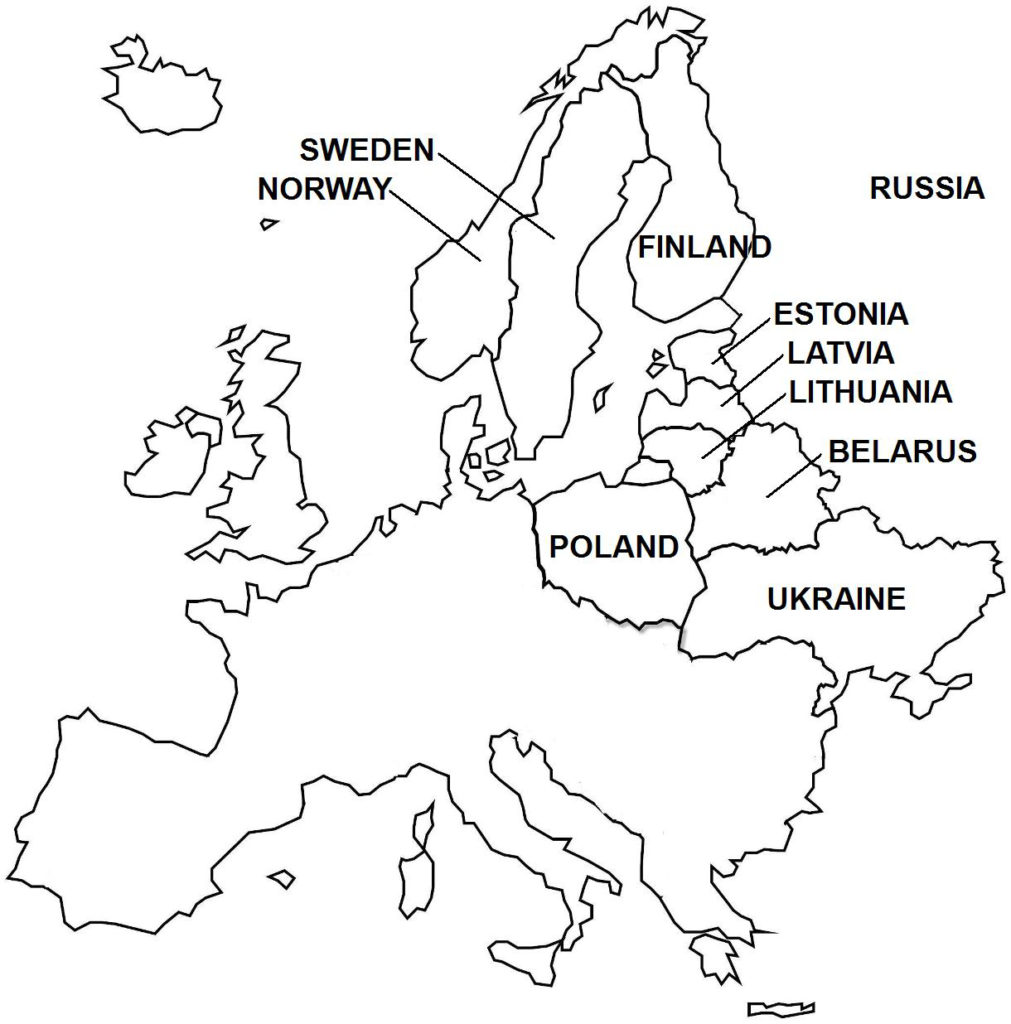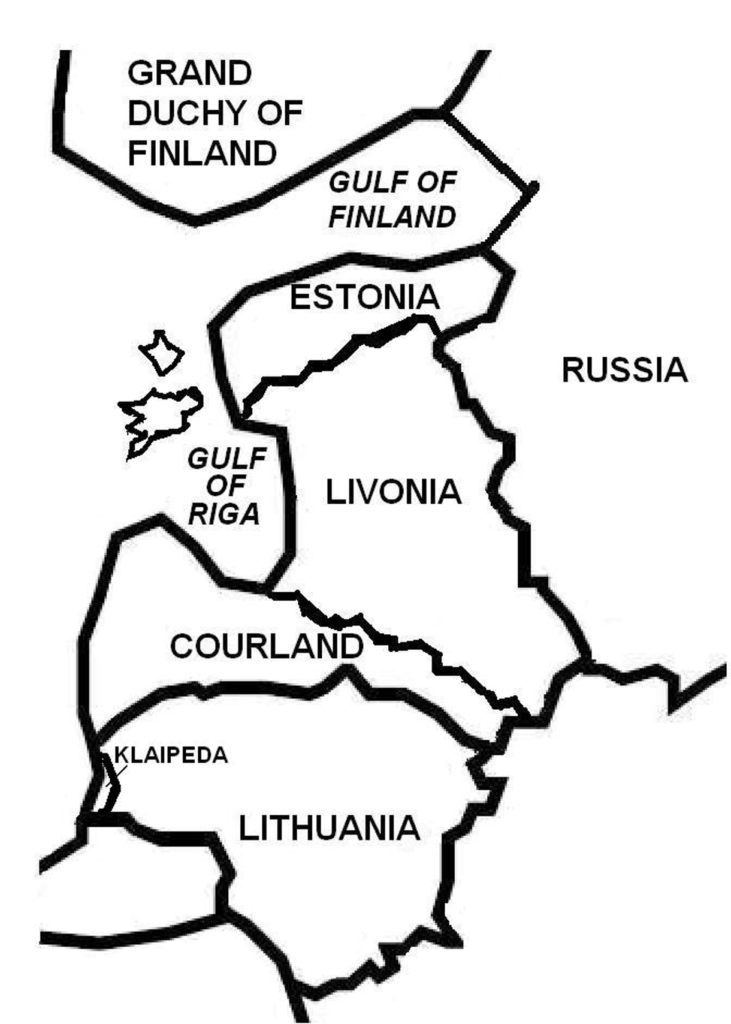The final combat phase of Latvia’s independence war occurred on January 3, 1920 when the combined Latvian and Polish Armies attacked and captured Latgale, freeing the last Latvian territory still held by the Red Army. Then after achieving another decisive victory at the Battle of Daugavpils (fought under harsh, sub-zero winter conditions), the Latvian-Polish forces pushed the Red Army into Russian territory. Polish forces then withdrew from Latgale after turning over the territory to the Latvians. The Russian government ceased its support for the Latvian Soviet Socialist Republic, which disbanded on January 13, 1920.

(Taken from Latvian War of Independence – Wars of the 20th Century –Vol. 4)
Background As a result of the Northern Crusades in the 13th century, the various indigenous peoples inhabiting the eastern Baltic region (which includes the lands that comprise present-day Latvia) were converted to Christianity. German crusader-knights of the Teutonic Order founded Riga (the present-day capital of Latvia) from where they conquered the adjacent regions, including the territory to the north that now constitutes modern-day Estonia. German settlers then arrived and settled in the regions, and Riga was transformed during the medieval period into a major center of the Hanseatic League, which was an economic and trade alliance of many major cities along the coasts of the North and Baltic Seas. As a result of these invasions, the ethnic German conquerors gained political, economic, and social ascendancy in Latvia (which largely would persist for the next 700 years) by acquiring vast tracts of land that were converted to feudal agricultural manorial estates worked by ethnic Latvians who were relegated to the status of peasant laborers.
In 1561, the Polish-Lithuanian Commonwealth, a confederated empire of two sovereign states, gained control of large portions of Latvian territory, which in turn, after the Polish-Swedish War ended in 1629, it ceded to the Swedish Empire. In 1721, the Swedish Empire, following its defeat in the Northern Wars, yielded the territory to the victorious and emerging Russian Empire. In the Polish-Lithuanian, Swedish, and Russian conquests, the local German authority in Latvia, now forming the “Baltic German nobility”, was allowed to maintain local rule on behalf of the greater colonial power. Latvia under Tsarist Russia was ruled under two jurisdictions: the Governorate (province) of Courland on the west and Governorate of Livonia. The latter comprised the ethnic Estonian northern region and the ethnic Latvian southern region – upon the independence of Estonia and Latvia, the Governorate of Livonia’s Estonian north became part of Estonia while the Latvian south merged with the Governorate of Courland to form the Latvian state (Figure 20).
By the mid-19th century, as a result of the French Revolution (1789-1799), a wave of nationalism swept across Europe, a phenomenon that touched into Latvia as well. The Latvian nationalist movement was led by the “Young Latvians”, a nationalist movement of the 1850s to 1880s that promoted Latvian identity and consciousness (as opposed to the prevailing Germanic viewpoint that predominated society) expressed in Latvian art, culture, language, and writing. The Baltic German nobility used its political and economic domination of society to suppress this emerging Latvian nationalistic sentiment. The Russian government’s attempt at “Russification” (cultural and linguistic assimilation into the Russian state) was rejected by Latvians. The Latvian national identity also was accelerated by other factors: the abolition of serfdom in Courland in 1817 and Livonia in 1819, the growth of industrialization and workers’ organizations, increasing prosperity among Latvians who had acquired lands, and the formation of Latvian political movements.
The Russian Empire opposed these nationalist sentiments and enforced measures to suppress them. Then in January 1905, the social and political unrest that gripped Russia (the Russian Revolution of 1905) produced major reverberations in Latvia, starting in January 1905, when mass protests in Riga were met with Russian soldiers opening fire on the demonstrators, killing and wounding scores of people. Local subversive elements took advantage of the revolutionary atmosphere to carry out a reign of terror in the countryside, particularly targeting the Baltic German nobility, torching houses and looting properties, and inciting peasants to rise up against the ethnic German landowners. In November 1905, Russian authorities declared martial law and brought in security forces that violently quelled the uprising, executing over 1,000 dissidents and sending thousands of others into exile in Siberia.
Then in July 1914, World War I broke out in Europe, with Russia allied with other major powers Britain and France as the Triple Entente, against Germany, Austria-Hungary, and the Ottoman Empire that comprised the major Central Powers. In 1915, the armies of Germany and Austria-Hungary made military gains in the northern sector of the Eastern Front; by May of that year, German units had seized sections of Latvian Courland and Livonian Governorates. A tenacious defense put up by the newly formed Latvian Riflemen of the Imperial Russian Army held off the German advance into Riga for two years, but the capital finally fell in September 1917.
Meanwhile, by 1917, the Russian Empire was verging on a major political collapse at home after experiencing a number of devastating military defeats in the Eastern Front of the war,. Two revolutions broke out that year. The first, on March 8 (this day being February 23 in the Julian calendar that was used in Russia at that time, hence the historical name, “February Revolution” denoting the event; in January 1918, Russia, by now ruled by the Bolsheviks, adopted the Gregorian calendar that was already in use in Western Europe), led to the end of three centuries of Romanov dynastic rule in Russia with the abdication of Tsar Nicholas II. A Russian Provisional Government was installed to administer the country which it declared as the “Russian Republic”.
The second revolution of 1917 occurred on November 7 (October 25 in the Julian calendar, thus the popular name “October Revolution” denoting this event), where the communist Bolshevik Party came to power by overthrowing the Russian Provisional Government in Petrograd, Russia’s capital. The two 1917 revolutions, as well as ongoing events in World War I, catalyzed ethnic minorities across the Russia Empire, resulting in the various regional nationalist movements pushing forward their political objectives of seceding from Russia and forming new nation-states. In the western and northern regions of the empire, the subject territories of Poland, Belarus, Ukraine, Lithuania, Latvia, Estonia, and Finland moved toward secession from Russia.

The Bolsheviks, on coming to power in the October Revolution, issued the “Declaration of the Rights of the Peoples of Russia” (on November 15, 1917), which granted all non-Russian peoples of the former Russian Empire the right to secede from Russia and establish their own separate states. Eventually, the Bolsheviks would renege on this edict and suppress secession from the Russian state (now known as Russian Soviet Federative Socialist Republic, or RSFSR). The Bolshevik revolution also had succeeded partly on the communists promising a war-weary citizenry that Russia would withdraw from World War I; thereafter, the Russian government declared its pacifist intentions to the Central Powers. A ceasefire agreement was signed on December 15, 1917 and peace talks began a few days later in Brest-Litovsk (present-day Brest, in Belarus).
However, the Central Powers imposed territorial demands that the Russian government deemed excessive. On February 17, 1918, the Central Powers repudiated the ceasefire agreement, and the following day, Germany and Austria-Hungary restarted hostilities, launching a massive offensive with one million troops in 53 divisions along three fronts that swept through western Russia and captured Ukraine Belarus, Lithuania, Latvia, and Estonia. German forces also entered Finland, assisting the non-socialist paramilitary group known as the “White Guards” in defeating the socialist militia known as “Red Guards” in the Finnish Civil War. Eleven days into the offensive, the northern front of the German advance was some 85 miles from the Russian capital of Petrograd.
On February 23, 1918, or five days into the offensive, peace talks were restarted at Brest-Litovsk, with the Central Powers demanding even greater territorial and military concessions on Russia than in the December 1917 negotiations. After heated debates among members of the Council of People’s Commissars (the highest Russian governmental body) who were undecided whether to continue or end the war, at the urging of its Chairman, Vladimir Lenin, the Russian government acquiesced to the Treaty of Brest-Litovsk. On March 3, 1918, Russian and Central Powers representatives signed the treaty, whose major stipulations included the following: peace was restored between Russia and the Central Powers; Russia relinquished possession of Finland (which was engaged in a civil war), Belarus, Ukraine, and the Baltic territories of Estonia, Latvia, and Lithuania – Germany and Austria-Hungary were to determine the future of these territories; and Russia also agreed on some territorial concessions to the Ottoman Empire.
German forces occupied Estonia, Latvia, Lithuania, Belarus, Ukraine, and Poland, establishing semi-autonomous governments in these territories that were subordinate to the authority of the German monarch, Kaiser Wilhelm II. The German occupation of the region allowed the realization of the Germanic vision of “Mitteleuropa”, an expansionist ambition aimed at unifying all Germanic and non-Germanic peoples of Central Europe into a greatly enlarged and powerful German Empire. In support of Mitteleuropa, in the Baltic region, the Baltic German nobility proposed to set up the United Baltic Duchy, a semi-autonomous political entity consisting of present-day Latvia and Estonia that would be voluntarily integrated into the German Empire. The proposal was not implemented, but German military authorities set up local civil governments under the authority of the Baltic German nobility or ethnic Germans.
